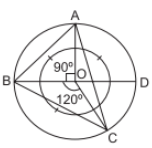

In mathematics, construction typically refers to the act of drawing geometric shapes using only a compass and a straightedge. This ancient practice has roots in Greek mathematics and is deeply connected with the field of classical geometry.These constructions are fundamental in geometry and provide a hands-on approach to solving geometric problems. Class 10 construction important questions and answers are designed as a valuable tool to help students build confidence in their mathematical skills.
The chapter on "Constructions" is an essential part of geometry. This chapter teaches students how to create various geometric shapes and figures using only a compass and straightedge. Constructions are crucial because they not only enhance students' problem-solving skills but also lay the foundation for more advanced geometric concepts. Constructions involve using two primary tools—the compass, which is used to draw circles and arcs, and the straightedge, which is a ruler without markings. These tools are used to create accurate geometric shapes and solve problems. In construction problems, you do not use numerical measurements like lengths or angles. Instead, you rely on the properties of geometric figures and relationships between them. These concepts are crucial when studying Class 10 construction important questions and answers.
Constructions in mathematics refer to the process of creating geometric figures or shapes using precise steps and tools—typically, a compass and a straightedge. The goal of constructions is to create these figures accurately without relying on measurements or numerical values.

Ans. (b) 5 cm
Explanation:
△AOB is a right angle triangle.
∴ by pythagoras theorem
(OA)2 = (OB)2 - (AB)2
OA = (13)2 - (12)2
OA = 169 - 144 = 25
= 5 cm.

Ans. (b) 5 cm
Explanation:
As we know that
(DC)2 = AC × BC
(6)2 = 9 × BC
BC = 369 = 4 cm.
Now AB = AC – BC
= 9 – 4
AB = 5 cm

Explanation:
Steps of construction :
(i) Draw a circle with radius = 3·5 cm.
(ii) Draw diameter BOD and construct ∠BOA = 90°.
(iii) Again make ∠BOC = 120°.
(iv) Join AB, AC and BC. Then, ABC is the required triangle

Explanation:
Given, radius = 4 cm and OP = 7 cm
Steps of constructions :
(i) Draw a circle of radius 4 cm with centre at O.
(ii) Draw a line OX and cut-off OP = 7 cm.
(iii) Bisect OP at M.
(iv) With M as centre, draw a circle passing through the points O and P to cut the previous circle at A and B.
(v) Join P with A and B. Hence, AP and BP are the required tangents.
∴ The length of tangent, AP = 5.7 cm

Explanation:
Steps of construction :
(i) Draw a line segment AB = 5 cm long.
(ii) Make an angle of 75° at ‘B’ draw perpen -dicular bisector of AB and angular bisector of B.
(iii) Mark 3·5 cm on the perpendicular bisector with O as center and radius equal to OA or OB draw circumcircle.
(iv) Mark 2·5 cm on AC from A.
(v) Join BD, it will intersect at P, with P as centre and PD as radius draw another circle.


Construction of class 10 ICSE mathematics is like a toolbox for students to create precise shapes and figures in geometry. If you seek additional practice and a deeper comprehension of the topics covered in the chapter, oswal.io offers an extensive array of ICSE maths class 10 construction to facilitate a more profound understanding of the concepts.
Ans: Constructions in mathematics are methods for creating geometric figures using only a compass and a straightedge, without using measurements or numerical values.
Ans: Constructions help students understand geometric concepts, develop problem-solving skills, and have real-world applications in fields like engineering and architecture.
Ans: The primary tools used in constructions are a compass (for drawing circles and arcs) and a straightedge (a ruler without markings).
Ans: Bisecting an angle means dividing it into two equal parts. This skill is used in various geometric constructions and to create angles of specific measurements.
Ans: To draw a perpendicular bisector, use a compass to create arcs on both sides of the line segment. Then, draw two arcs of equal radius above and below the segment. The intersection points are the endpoints of the perpendicular bisector.